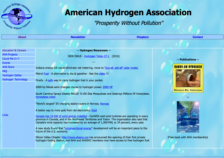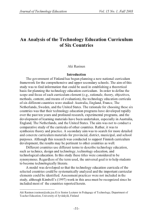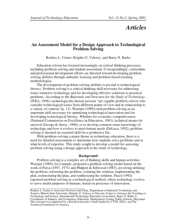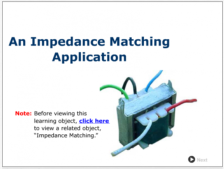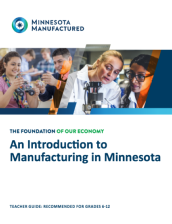Browse Resources
Resources |
|---|
This website, provided by the American Hydrogen Association, offers information about hydrogen as an alternative energy source. Through educational products and research, publications and outreach programs, the AHA seeks to promote understanding of hydrogen technology and to help create a market...
This 117-page resource from the Northwest Center for Sustainable Resources (NCSR) "provides information, both historical and contemporary, insights, and ideals about American Indians and natural resources in various contexts." The resources includes three sections: Historical and Contemporary...
This paper, by Aki Rasinen, Senior Lecturer in Pedagogy of Technology in the Department of Teacher Education at the University of Jyväskylä, Finland, covers technology education curricula of six countries: Australia, England, France, The Netherlands, Sweden, and the United States. An overview is...
This paper by Rodney L. Custer, Brigitte G. Valesey, and Barry N. Burke, covers problem solving in technological education and presents and assessment model to evaluate technological design activities. The research problem, objectives, methodology, findings, and recommendations are discussed.
Module Description:
The production of genetically modified organisms as an environmental issue is examined in this module. "Potential environmental impacts of genetically modified crops are emphasized, although human health concerns are also addressed. Our current state of knowledge and the...
Module Description: The Fire Ecology and Management Series is provided by the Northwest Center for Sustainable Resources and includes six modules. This series “is designed to address both the general role of fire in ecosystems as well as specific wildfire management issues in forest ecosystems.” The...
This learning object, created by Terry Bartelt of the Wisconsin Online Resource Center, provides information about impedance matching applications. "learners consider why an impedance matching transformer is needed to connect an antenna to a television."
This video by Bio-Link provides information on the Bay Area Biotechnology Education Consortium (BABEC). Teachers, students, and industry professionals discuss the opportunities BABEC provides for Bay Area schools, educators, and students. BABEC "is dedicated to supporting access to biotech education...
In this video, created by Support Center for Microsystems Education (SCME), viewers are introduced to the concept of DNA microarrays including what they are and how they are used today. DNA microarrays are used in a variety of fields including medicine, agriculture, and toxicology and have led to...
This 80-page teacher guide, provided by the Minnesota State Advanced Manufacturing Center of Excellence, includes ready-made lessons for students in grades 6-12 to explore careers in manufacturing. This guide includes the following chapters: What is Manufacturing, Manufacturing in Minnesota,...
|
| ← PreviousNext → |
